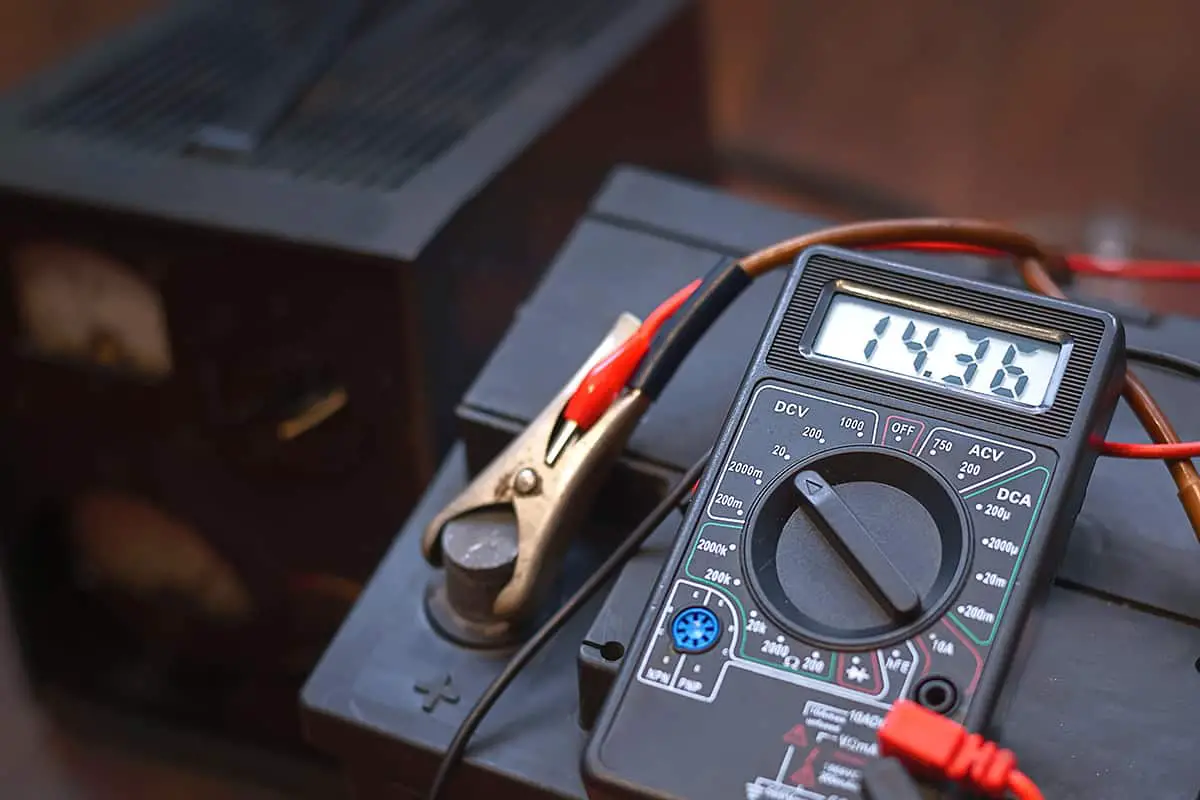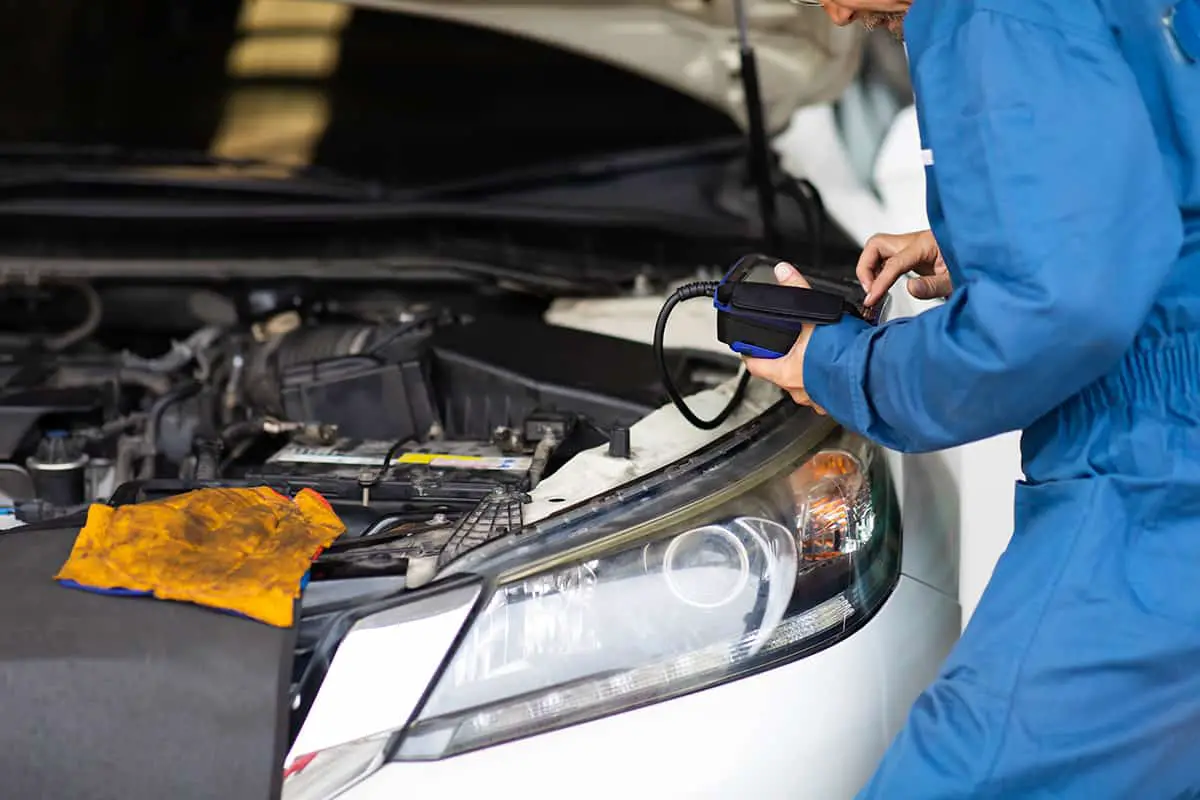Driving a car comes with its fair share of challenges, and one such issue that drivers may encounter is a battery voltage drop while on the road. When the battery voltage drops, it can cause a range of problems, from dimming headlights to a stalled engine, making it essential to address the issue promptly.
Battery voltage drops can stem from a variety of causes, including:
- Alternator issues (worn-out brushes, faulty voltage regulator, damaged alternator belt)
- Battery problems (old or weak battery, loose or corroded battery connections, battery cell damage)
- Electrical system faults (parasitic drains, short circuits, grounding issues)
Throughout this guide, we will explore the fundamentals of battery voltage, discuss common causes for voltage drops, and provide diagnostic steps to pinpoint the issue. We will also offer practical solutions for resolving battery voltage problems.
Battery Voltage Basics

A car battery is an essential part of a vehicle’s electrical system. It supplies power to start the engine and run electronic devices when the engine is off. The alternator charges the battery and powers the vehicle’s electronics while the engine is running.
The battery stores electrical energy as chemical energy and converts it to electricity when needed. A fully charged car battery typically has a voltage of around 12.6 volts. When the engine is running, the voltage should be between 12.6 and 14.4 volts.
Common Causes of Battery Voltage Drops
Battery voltage drops can be frustrating, especially when you need your electronic devices to work properly. There are several common causes of battery voltage drops that can be easily identified and resolved with a little troubleshooting.
1. Alternator issues
The alternator plays a key role in maintaining battery voltage. If it malfunctions, the battery may not charge properly, leading to a voltage drop. Common alternator issues include:
a. Worn-out brushes
Brushes in the alternator can wear down over time, reducing the alternator’s efficiency and ability to charge the battery.
b. Faulty voltage regulator
The voltage regulator controls the amount of voltage produced by the alternator. A faulty voltage regulator can cause overcharging or undercharging of the battery.
c. Damaged alternator belt
A loose or damaged belt can affect the alternator’s performance and lead to voltage fluctuations.
2. Battery problems
The battery itself can be a source of voltage drops. Some battery-related issues include:
a. Old or weak battery
As batteries age, their ability to hold a charge diminishes, resulting in a drop in voltage.
b. Loose or corroded battery connections
Poor connections can disrupt the flow of electricity between the battery and the vehicle’s electrical system.
c. Battery cell damage
Damaged battery cells can cause a decrease in voltage, affecting the battery’s overall performance.
3. Electrical system faults

Issues within the vehicle’s electrical system can also cause voltage drops. Common electrical system problems include:
a. Parasitic drains
Parasitic drains occur when electronic devices continue to draw power from the battery even when the engine is off, leading to a gradual decline in battery voltage.
b. Short circuits
A short circuit can cause a sudden drop in voltage, potentially damaging the battery and other electrical components.
c. Grounding issues
Poor grounding can result in voltage fluctuations and reduced performance of the electrical system.
Diagnosing the Cause of the Voltage Drop

To identify the cause of a voltage drop, follow these steps using essential tools like a multimeter, battery load tester, and an OBD-II scanner:
1. Preliminary checks
Inspect the battery terminals for corrosion or loose connections. Clean and tighten the terminals if needed. Also, check the alternator belt for signs of wear or damage, replacing it if necessary.
2. Test the battery and alternator
Measure the battery voltage with a multimeter when the engine is off and when it’s running. A fully charged battery should read around 12.6 volts, while a running engine should produce a voltage between 12.6 and 14.4 volts. If the voltage is outside this range, it could indicate a problem with the battery or alternator.
Use a load tester to assess the battery’s overall health. Use an OBD-II scanner to identify any fault codes related to the alternator or the vehicle’s electrical system.
4. Investigate the electrical system
If the battery and alternator appear to be functioning correctly, the issue might be within the vehicle’s electrical system. Common electrical system problems include parasitic drains, short circuits, and grounding issues.
Fixing Battery Voltage Drops
Once you’ve identified the cause of the voltage drop, it’s time to address the issue. Here are the common fixes for battery voltage drops:
1. Alternator repairs/replacement
- Replacing brushes—If worn-out brushes are the problem, replace them to restore the alternator’s efficiency and ability to charge the battery.
- Installing a new voltage regulator—If the voltage regulator is faulty, replace it to ensure the alternator produces the correct voltage output.
- Changing the alternator belt—If the belt is loose or damaged, replace it to improve the alternator’s performance and prevent voltage fluctuations. If the alternator is damaged beyond repair, consider replacing the entire unit.
2. Battery maintenance/replacement
- Cleaning and tightening connections—Remove any corrosion from the battery terminals and tighten the connections to ensure proper electrical flow.
- Checking and refilling electrolyte levels—If your battery has removable caps, inspect the electrolyte levels and top them off with distilled water if necessary.
- When to replace the battery—If the battery is old, weak, or damaged, it’s best to replace it with a new one to avoid future voltage drops and potential damage to the vehicle’s electrical system.
3. Addressing electrical system issues
- Locating and fixing parasitic drains—If you’ve identified a parasitic drain, find the responsible device or circuit and fix the issue. This may involve replacing a faulty component or rewiring the circuit.
- Repairing short circuits—If a short circuit is causing the voltage drop, locate the damaged wiring or component and repair or replace it as needed. In some cases, you might need professional assistance to identify and fix the problem.
- Improving grounding—Poor grounding can result in voltage fluctuations and reduced performance of the electrical system. Check and clean the grounding points and ensure they have a secure connection to the vehicle’s frame.
FAQs
1. How can I tell if my battery or alternator is failing?
To determine if your battery or alternator is failing, pay attention to these signs:
- Difficulty starting the vehicle—A weak or failing battery can struggle to supply enough power to start the engine, causing slow cranking or no start at all.
- Dimming headlights—Dimming or flickering headlights, especially when the engine is idling, can indicate a failing alternator or battery.
- Warning lights—A battery or alternator warning light on your dashboard is a clear indicator that there is a problem with your charging system.
- Electrical malfunctions—Issues with other electrical components, such as power windows, radio, or interior lights, can point to a failing battery or alternator.
2. Can extreme temperatures affect battery voltage?
Yes, extreme temperatures can affect battery voltage. High temperatures can cause the battery’s electrolyte to evaporate, leading to a decrease in battery capacity and a drop in voltage.
On the other hand, low temperatures can cause the electrolyte to thicken and the battery’s internal resistance to increase, resulting in reduced voltage and slower chemical reactions. In both cases, the battery’s ability to hold a charge and supply power to the vehicle can be negatively impacted.
3. Is it safe to drive with a voltage drop?
Driving with a voltage drop can be risky, as it indicates a problem with your vehicle’s charging system. A significant voltage drop can result in reduced performance of your car’s electrical components, such as headlights, power steering, and brake systems. It can also cause your vehicle to stall or not start at all, leaving you stranded.






